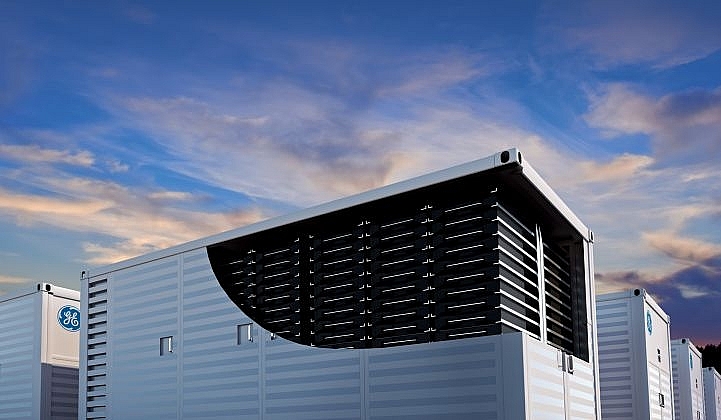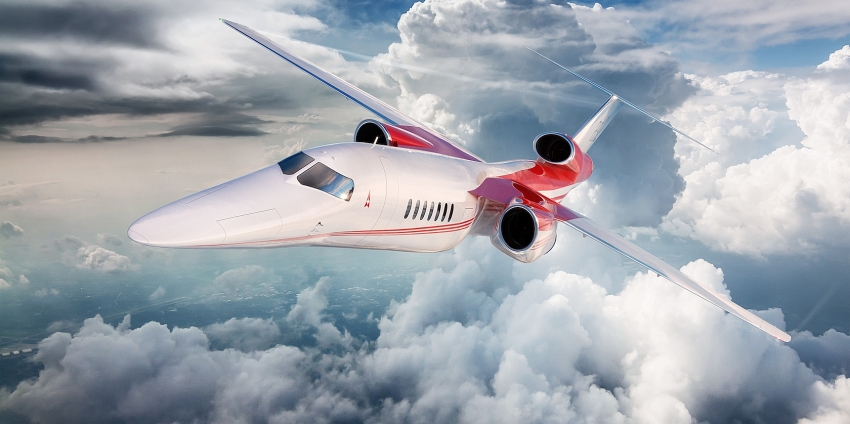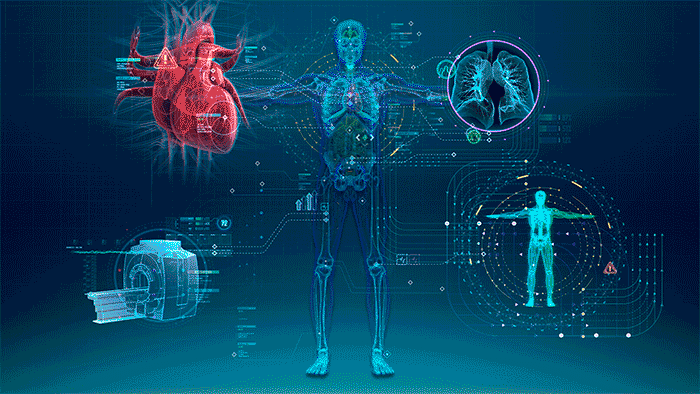Reflecting on key trends in energy, aviation and healthcare in 2019
Energy
 |
Battery storage power ups
Battery storage has long been talked about as the spark to power the next stage of the renewable revolution. With renewable energy accounting for more than a third of the total installed electricity capacity in 2018, an impressive 2,351GW, we are now approaching an inflection point in enabling the continued expansion of this technology. Battery storage will be required to ensure sustainable energy supply as the energy mix shifts closer to an essential zero-carbon future.
The GE reservoir represents GE’s own part in this revolution, providing a power storage solution that offers compact, integrated energy storage to enable and optimise energy production. On a global scale, 2019 is a year experiencing notable investments in battery technology, with the renewable energy leader China progressing hundreds of millions of dollars of battery storage investment nationally. Corporate transactions and multimillion-dollar investments in battery storage technology companies by established industry players also speak to a pivotal year for this emerging technology.
Renewables shift end-to-end
Renewable technology is set to shift towards a more integrated landscape, with individual assets optimised as part of a digitally-integrated ecosystem.
The increasingly complex nature of renewables means a comprehensive and holistic approach is vital for success. GE’s announcement to integrate its own renewable assets into a single business unit reflects this increasing need to combine engineering, grid infrastructure, and data solutions as part of a comprehensive and integrated renewable energy ecosystem.
An end-to-end renewables approach will be essential to ensuring informed decisionmaking and optimised assets as renewable energy grows to play a larger share of national and global energy mixes. As consumers increasingly turn into prosumers, with renewable assets of their own feeding back into the grid, this integrated approach will be pivotal to ensure that energy networks continue to operate in an optimal way for all stakeholders.
Aviation
 |
Low-cost carriers drive growth in Southeast Asia
Southeast Asia’s astonishing aviation market growth is set to continue in 2019, with dynamic new operators such as Vietnam’s Bamboo Airlines emerging onto the market. This growth will continue to be driven by low-cost carriers (LCCs) that form a substantial part of the region’s aviation ecosystem.
According to South China Morning Post, global traffic will double in the next twenty years, with the Asia-Pacific being responsible for a substantial share of that growth. Southeast Asia’s LCCs currently have around 1,400 aircraft on order to meet growing demand, compared to the fewer than 400 for traditional full-service carriers. However, this rapid growth also raises the challenge of a pilot shortage. Boeing predicts that the Asia-Pacific needs about 261,000 pilots through 2037, which means that the number of pilots will need to double during that period.
The race for speed
2019 is set to be an exciting year for the re-emergence of supersonic travel, with a number of rival business jet technologies continuing their journey towards viable commercial supersonic flight.
This year will be about continuing to develop the technological capabilities but also about navigating the legislative and regulatory environment that has for years limited supersonic travel. This emerging sector includes the Aerion AS2, powered by GE’s Affinity™ Engine. The AS2’s unique design aims to negate the impact of the sonic boom by using complex engineering to direct the sonic boom away from the ground. This advanced engineering solution helps address concerns around the sound disruption caused by supersonic travel over land. This year may well be crucial in demonstrating proof of concept in this new race for speed.
Healthcare
 |
Healthcare spending accelerates in ASEAN
Changing demographics and lifestyles are creating an emerging challenge in the ASEAN’s healthcare ecosystem. The World Economic Forum (WEF) estimates that healthcare spending in part of the ASEAN (Indonesia, Malaysia, Philippines, Singapore, Thailand, Vietnam) is set to increase from $420 billion in 2017 to $740 billion by 2025. That represents a 70 per cent rise in healthcare spending.
With the growing opportunity of digital technologies, 2019 may well witness a growth in innovative solutions to tackle this spending challenge through early diagnosis and treatment. The ASEAN could benefit from leapfrogging the world’s more mature healthcare markets, without the burdens of tired legacy systems inhibiting growth in digital health. Emerging opportunities such as headline investment in telehealth in Indonesia, innovative startups integrating offline and online health in Vietnam, and emerging mobile apps across the region, are the kind of technologies to look out for in 2019 and beyond.
AI gets predictive in healthcare
AI is revolutionising industries around the globe, and healthcare is no exception. AI diagnosis is an important emerging area of health-tech. Is 2019 the year when AI in healthcare enjoys widespread adoption?
Effective solutions exist that demonstrate the power of AI in healthcare. Google’s Deep Mind technology has shown demonstrable and accurate diagnosis to help predict eye disease. GE is developing its own predictive AI technology for applications in healthcare on its revolutionary Edison AI platform, aiming to utilise the 97 per cent of imaging data captured but not analysed in healthcare. In Malaysia, a number of startups are using AI-based technology to predict medical needs and customer healthcare plans. Smart solutions and adoption could mean an artificially intelligent future for healthcare in the ASEAN and around the globe.
Maintaining the speed of innovation
In this emerging world of connected technologies, data-driven insight, and advanced engineering techniques, innovation continues to be the driver which pushes the pioneering edge of the global industry.
Whether that innovation is taking to the skies at 1,000 mph or transmitting data across a circuit at the speed of light, there is no sign that this drive for innovation is slowing in 2019.
In my role at GE, I’m privileged to witness the power of imagination at work. As I look across the global landscape, it’s fair to say – the reality of what imagination can deliver continues to be truly fantastic and has a very positive impacts on our world.
What the stars mean:
★ Poor ★ ★ Promising ★★★ Good ★★★★ Very good ★★★★★ Exceptional
 Tag:
Tag:
Related Contents
Latest News
More News
- Businesses ramp up production as year-end orders surge (December 30, 2025 | 10:05)
- Vietjet chairwoman awarded Labour Hero title (December 29, 2025 | 13:06)
- How to unlock ESG value through green innovation (December 29, 2025 | 10:03)
- AI reshapes media and advertising industry (December 29, 2025 | 08:33)
- FPT and GELEX sign deal to develop blockchain tech for global markets (December 29, 2025 | 08:29)
- Vietnam’s GDP forecast to grow by 9 per cent in 2026 (December 29, 2025 | 08:29)
- Women entrepreneurs are key to Vietnam’s economic growth (December 29, 2025 | 08:00)
- Vietnam's top 500 value-creating enterprises announced (December 27, 2025 | 08:00)
- The PAN Group shaping a better future with ESG strategy (December 26, 2025 | 09:00)
- Masan Consumer officially lists on HSX, marking the next phase of value creation (December 25, 2025 | 13:20)





























 Mobile Version
Mobile Version